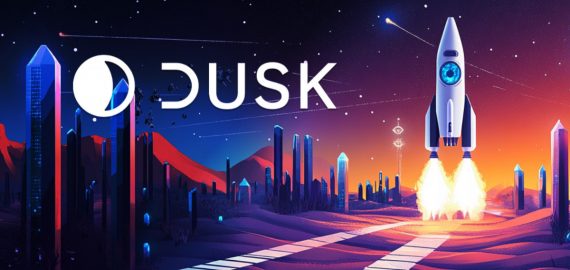With The Rise Of Play-And-Earn Dynamics, GameFi Is Shifting To A More Sustainable Model

In Brief

GameFi has become one of the hottest segments in the blockchain industry, making it possible for people to earn viable, real-life rewards while they enjoy playing computer games. As the industry evolves, it is slowly shifting from the traditional “play-to-earn” model to a new “play-AND-earn” model that’s inherently more sustainable, helping to address the problems of inflation that have plagued many early GameFi titles.
The play-to-earn model made a big splash during the days of the COVID-19 pandemic, as thousands of gamers the world over hit upon a way to generate a passive income while shut up inside. With hit titles such as Axie Infinity and Splinterlands, players are tasked with completing daily challenges and battling against one another to earn crypto rewards, which can then be sold for real money. It was an exciting model that made some of the most dedicated gamers much wealthier, but it soon became apparent that there were some serious problems with the tokenomics of most play-to-earn games.
One of the challenges is that most play-to-earn games are not sustainable. While the first batch of players to start playing a new game might be able to make a decent profit, faults with their tokenomics become apparent as more players join and the value of the game’s native cryptocurrency declines rapidly, making it harder for people to recoup their initial investment. In addition, most play-to-earn games are not that enjoyable. An article in Vice cites the example of Axie Infinity. Although users could earn hundreds of dollars per month at the height of the pandemic, many players quickly began to view playing the game as a chore, getting little enjoyment from the actual gameplay. Another issue is wealth inequality, as those players with more resources can easily dominate the game and generate far more rewards than anyone else.
From Play-to-Earn To Play-And-Earn
It’s for these reasons that GameFi developers are now eagerly embracing the so-called play-and-earn model instead. It’s a new and evolving concept that aims to address the limitations of play-to-earn with a sharper focus on the actual gameplay, as opposed to just earning. The intention is to create a game that people actually enjoy playing, before adding monetary incentives later.
The play-and-earn model combines engaging gameplay with financial rewards. By necessity, they also introduce more stable tokenomics frameworks that ensure the long-term sustainability of the in-game economies. In this way, they can attract players primarily through the game experience, with the crypto-based rewards simply being an added bonus.
Creating a successful play-and-earn game requires the developers to do a bit more homework. For one thing, they need to prioritize security and transparency to ensure players’ data and assets are protected and that the outcome of the games is provably fair. The gameplay needs to be top-notch and to keep people interested, the developers should deliver continuous updates and fresh content, so it doesn’t become stale over time.
Most importantly, play-and-earn games need a carefully planned in-game economy that strikes the right balance between supply and demand of its native rewards token. This is necessary to maintain a stable price, so the value of the daily rewards players receive doesn’t diminish.
Sustainable In-Game Economics
One of the most successful play-and-earn games thus far is LandRocker, which offers a unique blend of adventure, exploration, strategy and incentives.
With LandRocker, players are tasked with exploring the universe and the numerous planets within it to mine for valuable resources. Players use NFT-based Rovers to explore each planet, mine and extract resources, and then use these to trade and build up their fleets of Rovers.
The game integrates blockchain technology in its core, with an innovative validation system that ensures fair distribution of the in-game rewards, creating greater trust and ensuring fairness.
LandRocker is unique in that it combines both play-to-win and play-to-earn characteristics, with limited participation helping to maintain a balanced rewards pool to stabilize the in-game economy. The supply of LRT tokens is capped, and by limiting the number of rewards players can earn each day from performing different tasks, LandRocker prevents inflation by managing the influx of new capital into the game. Because there is a fixed amount of rewards that can be earned each day, it prevents an excessive amount of tokens circulating through its economy, mitigating inflationary pressures.
Another game that has stood the test of time is Star Atlas, which is a space-based exploration game that involves building up fleets, trading minerals, piracy and more. It’s an addictive RPG game that introduces NFTs with a limited lifespan, which can only be purchased using the game’s native currency, ATLAS. Because the NFTs only have a limited lifetime before they expire, players are compelled to continually reinvest the rewards they earn back into the game, helping to maintain stable token supply and demand metrics.
The blockchain-based card trading game Dfiance also exemplifies the play-and-earn model. Notably, the game is actually free-to-play, though gamers can get more out of it by acquiring an NFT. Because the core game is FTP, players are encouraged to play the game and enjoy the experience without the pressure of needing to invest. Investing in an NFT is optional, but it is advantageous. The advantages entice players to put money back into the in-game economy to increase their rewards potential. The developers deliver continuous updates to the game, adding new functionality on a regular basis to ensure the gameplay remains engaging and fresh. This focus on the user experience sets Dfiance apart from other card trading games and provides a solid foundation for the in-game economy.
Sustainable Gaming is The Future Of GameFi
The advent of play-to-earn was an exciting development in the gaming and blockchain industries, but it’s a business model that has ultimately proven to be unsustainable, due to its focus on the desire to earn. Because rewards are prioritized above all else, play-to-earn games inevitably lack the balance to survive long-term without a constant influx of new players.
In contrast, the play-and-earn model is more focused on engaging and fun gameplay, with the earnings potential simply being the icing on the cake. This focus on enjoyment encourages players to stick around for the long term, and plays a key role in maintaining a healthy in-game economy.
GameFi developers need to strike the right balance, creating a fun and rewarding game with stable tokenomics. As more developers do this, the industry looks sure to have a viable, long-term future. Done right, play-and-earn games will foster a thriving and inclusive community made up of players from all walks of life. By prioritizing the gameplay and ensuring players stick around, the play-and-earn model paves the way for GameFi dynamics to be integrated into every video game.
Disclaimer
In line with the Trust Project guidelines, please note that the information provided on this page is not intended to be and should not be interpreted as legal, tax, investment, financial, or any other form of advice. It is important to only invest what you can afford to lose and to seek independent financial advice if you have any doubts. For further information, we suggest referring to the terms and conditions as well as the help and support pages provided by the issuer or advertiser. MetaversePost is committed to accurate, unbiased reporting, but market conditions are subject to change without notice.
About The Author
Gregory, a digital nomad hailing from Poland, is not only a financial analyst but also a valuable contributor to various online magazines. With a wealth of experience in the financial industry, his insights and expertise have earned him recognition in numerous publications. Utilising his spare time effectively, Gregory is currently dedicated to writing a book about cryptocurrency and blockchain.
More articles

Gregory, a digital nomad hailing from Poland, is not only a financial analyst but also a valuable contributor to various online magazines. With a wealth of experience in the financial industry, his insights and expertise have earned him recognition in numerous publications. Utilising his spare time effectively, Gregory is currently dedicated to writing a book about cryptocurrency and blockchain.

















































